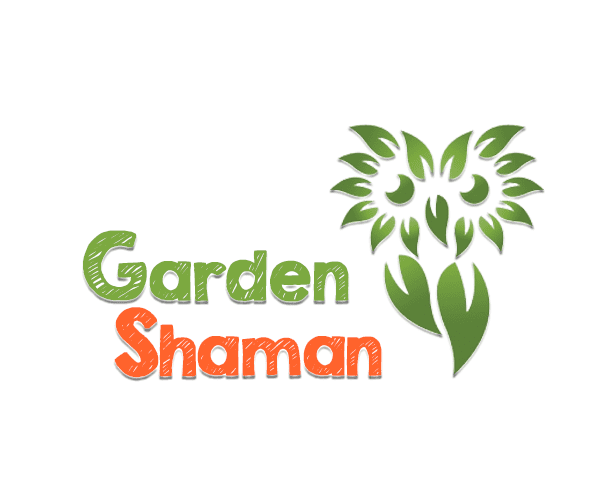- Introductory thoughts
- Winter garden basics in January and February
- "Smart" and traditional gardening for vegetables and herbs
- Sustainable conservatory care
- Preparing for spring
- Problem solutions in the conservatory
- Concluding thoughts
1. introductory thoughts
Contrary to popular belief, gardening work does not come to a standstill in January. In fact, this supposedly quiet winter month is ideal for important tasks such as pruning fruit trees and harvesting winter vegetables such as kale and leeks.
While you can tend to your apple and pear trees in frost-free weather, the cold season also offers the perfect opportunity to grow hardy vegetables such as artichokes, eggplants and various types of lettuce on the windowsill. You can also use this time to plan your garden calendar for the coming year and test old seeds for their germination capacity.
In this comprehensive winter garden guide, you will find out what essential gardening work is due in the winter months of January and February and how you can make the most of this time to prepare for the new gardening season.
2. winter garden basics in January and February
Successful maintenance of your conservatory starts with understanding the basic factors. First of all, you need to keep the three most important aspects in mind: Temperature, light and watering.
The optimum temperature and humidity
The right balance between temperature and humidity is crucial for a healthy conservatory. You should observe the following guide values:
- During the day: 18-22°C
- At night: at least 12-15°C
- Humidity: 60-70%
Regular ventilation is particularly important, preferably for 10-15 minutes in the morning. You can also regulate the humidity with water bowls or a small indoor fountain.
Light management for plants
Correct light management plays a central role in winter. Most plants need at least 6-8 hours of light a day, even in the dark season.
| Time of day | Measure |
|---|---|
| In the morning | Open roller shutters early |
| Noon | Using direct sunlight |
| Evening | Additional lighting as required |
You should also clean the windows of your conservatory regularly to ensure maximum light penetration.
Irrigation techniques in winter
In winter, the watering requirements of your plants change fundamentally. The most important rule is: less is more. Preferably water in the morning so that the water can evaporate before evening.
Keep a close eye on the soil moisture - the top layer of soil should dry out slightly between waterings. A practical tip: stick your finger about 2-3 cm deep into the soil. If it still feels moist, wait before watering.
For an optimum water supply, the use of room sprayers for humidifying the air is recommended. This method is particularly suitable for tropical plants, which also require higher humidity in winter.
3. smart and traditional gardening for vegetables and herbs
Modern technology makes your gardening work much easier in winter. With the right combination of smart systems and traditional methods, you can give your plants the best possible care.
Setting up automated irrigation systems
An automatic watering system not only saves time, but also up to 70% of water. First of all, you should set the watering in the early morning hours, as this is when evaporation is at its lowest. With a soil moisture sensor, the water supply can be controlled even more precisely.
Particularly suitable for your conservatory:
- Drip irrigation sets for even water distribution
- Water storage pots for constant humidity
- Intelligent time controls for automated processes
Making optimum use of LED plant lamps
LED grow lights are indispensable, especially in winter. For example, you can use them to grow your own tomatoes even in the cold season. In addition, LED grow lights save around 30% energy compared to conventional fluorescent tubes.
| Light color | Effect on plants |
|---|---|
| Red | Promotes flowers and fruit |
| Blue | Supports photosynthesis |
| Daylight white | Optimal overall growth |
Smart sensors for plant care
Modern plant sensors work like little fitness trackers for your plants. They continuously measure important parameters:
- Soil moisture and temperature
- Lighting conditions
- Nutrient supply
Finally, you can receive notifications via an app when your plants need water or fertilizer. This automated monitoring is particularly valuable when you are away for long periods of time, as you can check the condition of your plants while you are on the move.
The right temperature is also crucial for herbs in the conservatory. Most herbs thrive best at temperatures between 10 and 16°C. Basil, however, needs a little more warmth, namely 10-22°C.
4. sustainable conservatory care
Sustainability in conservatories starts with well thought-out systems and clever solutions. A well-designed conservatory can not only protect your plants, but also save resources.
Energy-saving heating methods
The right heating strategy is crucial for an energy-efficient conservatory. First of all, you should ensure the basic temperature with a frost monitor. Various heating systems are also available:
| Heating method | Advantages | Field of application |
|---|---|---|
| Convectors | Even heat distribution | Along the glass surfaces |
| Infrared heating | Direct plant heat | Spot heating |
| Underfloor heating | Base heat | Supplementary heating |
Water-saving irrigation techniques
With modern irrigation systems, you can save up to 70% of water. A Micro-Drip system ensures precise and efficient water distribution. In addition, the patented "Quick & Easy" pipe connection technology allows flexible adaptation to your needs.
Recommended for optimum water savings:
- Automatic time control for watering in the morning hours
- Rain sensors to avoid unnecessary watering
- Dripper with precise regulation for individual plant requirements
Biological plant protection in winter
Finally, biological plant protection is an important aspect of sustainable conservatory care. Fungal infestation and other problems occur less frequently in controlled climatic conditions.
Frequent challenges are:
- Mealybugs and scale insects
- Aphids
- Thrips and spider mites
You can use plant strengthening agents for effective biological plant protection. These increase the resistance of your plants to pests. The use of plant broths, such as those made from nettles or horsetail, has proven to be a natural protective measure.
Early detection of pests is particularly important. Regular inspections of your plants, especially on the undersides of leaves and in leaf axils, help to identify problems in good time and initiate biological countermeasures.
5. preparation for spring
Now is the perfect time to systematically plan your spring gardening work. The important planting time for many vegetables and salads begins in mid-February.
Sowing planning with/without digital tools
First of all, you should plan your sowing carefully. The selection of vegetable seeds is impressive - from traditional to new varieties, in different colors and shapes. You can choose between classic planning with a garden calendar or modern digital tools.
The right time is particularly important: the rule of thumb is early to mid-March for most vegetables. It is also advisable to follow the information on the seed packets and to talk to experienced neighbors, as the climate can vary greatly from region to region.
Modern and traditional growing systems
You will need the following for successful cultivation:
- Special potting soil (low in nutrients for strong root formation)
- Sufficient light and constant heat
- Uniform humidity
The choice of cultivation system is crucial for success. Traditional methods such as windowsill cultivation are still popular and effective. Alternatively, modern mini-greenhouses or cold frames can be used.
| Cultivation system | Advantages | Special features |
|---|---|---|
| Window sill | Optimally bright and warm | Ideal starting point |
| Greenhouse | More hardening | Second growth phase |
| Mini greenhouse | Space-saving | Good moisture control |
Optimize spring preparations
After all, the right preparation for spring is crucial. The seedlings must never be allowed to dry out. A "natural heater" made from horse manure can generate the necessary heat without any electricity.
For optimum growing conditions, please note
- Temperature control: Constantly warm for good germination
- Light management: a bright location is essential
- Moisture regulation: keep evenly moist
- Hardening: gradually acclimatizing plants to outdoor conditions
You can also work with coco soil, which stores water particularly well and is a sustainable alternative to substrates containing peat. This is available in pressed and dried form and is ideal for growing.
Particularly important: Even if you can't implement all the recommendations to the letter, you shouldn't give up growing vegetables in advance. The joy of gardening and observing the growing seedlings is definitely worth the effort.
6. problem solutions in the conservatory
When problems occur in your conservatory, quick and targeted action is required. With the right methods, you can overcome the most common challenges yourself.
Pest control without chemicals
First of all, you can effectively combat pests with natural remedies. A tried and tested recipe is nettle extract: Mix 500g of fresh nettles with 5 liters of water and leave to stand for 24 hours.
The following natural solutions are suitable for various pests:
| Pest | Natural solution | Application |
|---|---|---|
| Aphids | Milk-water mixture (1:2) | Spray several times a week |
| Scale insects | Rapeseed oil or sunflower oil | Dab on directly |
| Ants | Lavender or lemon peel | Lay out as a barrier |
In addition, you can use beneficial insects such as lacewing larvae as a preventative measure, which work optimally against pests at temperatures between 20°C and 26°C.
Climate regulation in extreme weather
The optimum room temperature in your conservatory should be between 18-22°C and not fall below 12-15°C at night. For example, you can take the following measures in extreme heat:
- Activate automatic shading systems
- Ventilate early in the morning
- Support air circulation with fans
If the humidity is high, regular ventilation is also essential - at least twice a day for 10 minutes at a time.
Eliminate technical faults
After all, technical problems occur frequently and you should tackle them systematically. Leaks in the roof area are particularly critical. A non-pressurized sprinkler test helps to localize leaks.
Common causes of technical faults:
- Outdated seals and rubber linings
- Faulty component connections
- Blocked drainage systems
If there are leaks in the roof area, you should pay particular attention to the sealing joints. These must be underlaid with a PU foam cord. With self-cleaning glass, it is also important to ensure that only special hybrid polymer sealants in accordance with DIN EN ISO 11600 are used.
A systematic approach is recommended for maintenance:
- Regular inspection of all seals
- Checking the drainage systems
- Checking the shading system
- Test of all automatic controls
In the event of major technical problems, especially if a construction fault is suspected, you should consult a specialist or expert. This is particularly important if you wish to assert recourse claims.
7 Concluding thoughts
In summary, the winter months of January and February are by no means a dormant period for your garden. In fact, this period offers ideal opportunities to maintain your conservatory and prepare for the coming gardening season.
The right balance between temperature, light and irrigation is the foundation for healthy plants. The combination of traditional methods and modern technologies - from automated irrigation systems to LED plant lamps - is particularly important.
Sustainable care plays a central role. Energy-saving heating methods and water-saving irrigation techniques not only protect the environment, but also your budget. In addition, biological plant protection methods help to protect your conservatory naturally and effectively.
With systematic planning and the right preparations for spring, you can lay the foundations for a successful gardening season now. Remember: a well-tended winter garden will reward you with healthy, strong plants all year round.













